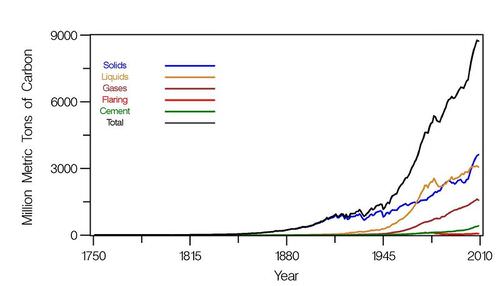1.4: Testing Hypotheses
- Page ID
- 5312
How can I show that my hypothesis is wrong?
Many young scientists learn that a good scientist tries to disprove her hypothesis. This is the best way to be sure that your hypothesis is getting a rigorous test. Why do you think established scientists tell students this? Why is it a good idea?
Testing Hypotheses
How do you test a hypothesis? Often you need scientific tools, perhaps a microscope or a magnetometer. You need to know how to analyze the data that come from those tools. Often computers are needed to gather, analyze, and interpret the data.
In this example, we will look into the scientific literature to find data. These studies were done using scientific method. The scientists used the necessary tools and computers. To test a new hypothesis, we would need to do the experiments ourselves.
We will test the two hypothesis that we developed to explain this fact: Atmospheric CO2 has increased over the past five decades.
Testing Hypothesis 1
Hypothesis 1: Atmospheric CO2 has increased over the past five decades because the amount of CO2 gas released by volcanoes has increased.
To test Hypothesis 1, we need to see if the amount of CO2 gas released by volcanoes over the past several decades has increased.
There are two ways volcanoes could account for the increase in CO2:
- There has been an increase in volcanic eruptions in that time.
- The CO2 content of volcanic gases has increased over time globally.
Our research tells us that 50-70 eruptions occur every year. We see that the number of volcanic eruptions is about constant. We learn from different scientific papers that volcanic gas compositions have not changed over time. Different types of volcanoes have different gas compositions. However, the gases overall are the same. Another scientific paper states that major volcanic eruptions for the past 30 years have caused short-term cooling, not warming!
Hypothesis 1 is wrong! Volcanic activity is not able to account for the rise in atmospheric CO2. Remember that science is falsifiable. We can discard Hypothesis 1.
When a hypothesis is wrong, often much has been learned anyway. Rarely is the pursuit of a hypothesis a total loss!
Testing Hypothesis 2
Hypothesis 2: The increase in atmospheric CO2 is due to the increase in the amount of fossil fuels that are being burned.
To test hypothesis 2, we need to see if the amount of CO2 gas released by fossil fuels over the past several decades has increased. We look into the scientific literature and find the following graph (Figure below).
Global carbon dioxide emissions from fossil fuel consumption and cement production. The black line represents all emission types combined. The colored lines show emissions from individual fossil fuels.
Fossil fuels have added an increasing amount of carbon dioxide to the atmosphere since the beginning of the Industrial Revolution in the mid 19th century. Hypothesis 2 appears to be at least partly true!
It is very important when testing hypotheses to eliminate any bias. A biased researcher may miss important factors that do not match his bias. It actually is good to try to disprove your own hypothesis! Having other researchers involved will also help to eliminate bias.
Summary
- Science is falsifiable. An incorrect hypothesis is discarded.
- Carbon dioxide levels in the atmosphere are increasing. Fossil fuel burning is increasing. The rise in fossil fuel burning is increasing the CO2 in the atmosphere.
- More than one hypothesis can be tested at a time. This is called multiple working hypotheses.
Review
- Could there be other reasons that CO2 has been increasing in the atmosphere for the past several decades? Could there be more than one reason?
- At this moment, can we say that the increase in fossil fuel burning is causing the increase in CO2 in the atmosphere?
- At this moment, can we say that the increase in fossil fuel burning is causing the rise in average global temperature?
- What do we need to do next to address the last two questions?
Explore More
Use the resource below to answer the questions that follow.
- How are they using the word "theory" in this video? What word would be more accurate for them to use in this context?
- What is the hypothesis they are testing?
- How do they test the hypothesis?
- What were their results?
- Is their hypothesis absolutely, certainly correct? If so, explain your reasoning. If not, what can they do to further narrow down whether the hypothesis is correct?


